One of the best known wine rivers in the world is the Moselle. It begins in France. Flowing north, it leaves France, and flows between Luxembourg and Germany, before entering the Rhine at the Deutsches Eck in Koblenz, at the heart, if not soul, of western Germany. Like the Rhine, vineyards cover the slopes along the river, flooding down to the water’s edge. The slopes are some of the steepest in the world, and along with the dramatic twists and turns of the river, form indelible images to remain forever with visitors to the region.
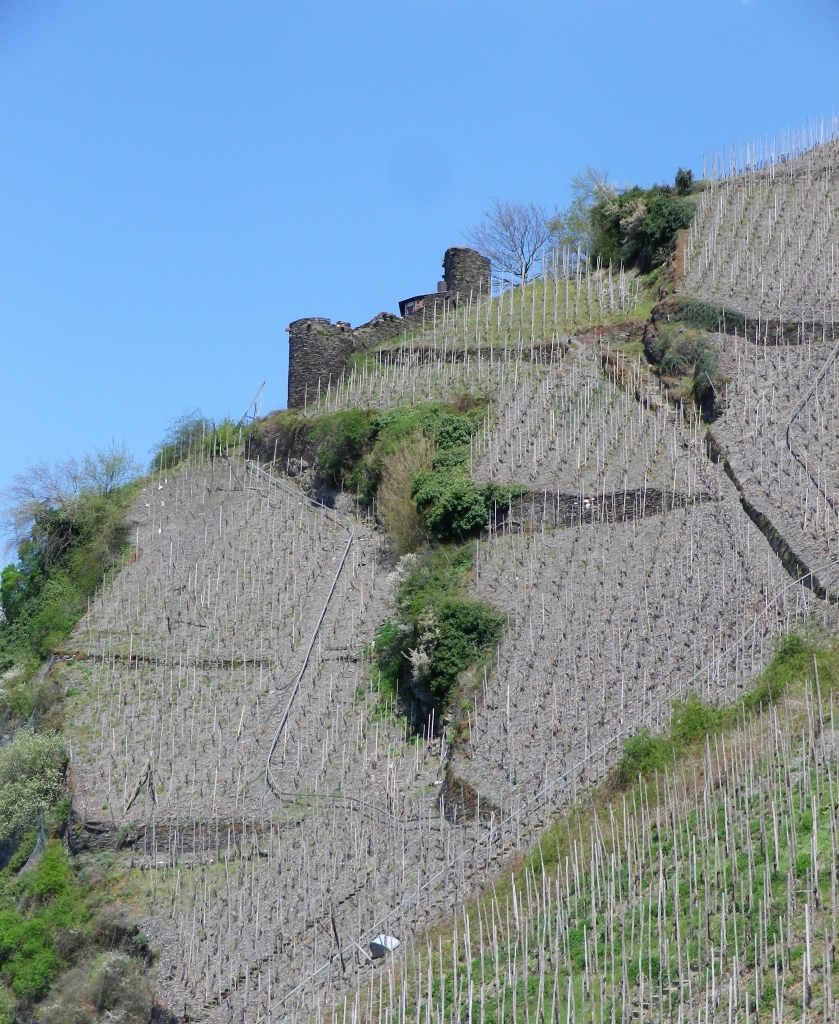
When I have the time someday, I would like to return to take an overnight cruise along the river, sitting on-deck sipping great Rieslings as sunlight turns to moonlight, changing the riverscape views with each passing hour. For the time being though, I was happy to take advantage of great spring weather to cruise along the shoreline by bike.
The popular Mosel Radweg (Moselle Bike Trail) is a fun and relaxing ride along the river. You can’t get more relaxed than this: pedaling along a smooth, flat trail, with romantic scenery, finding vintners’ establishment all along the way – every couple of hundred meters, for the most part. (I felt parched when, on just a couple of occasions, there were none for a kilometer or so.) But as I had an ambitious schedule, I didn’t stop. Many of the bikers on the trail did though, and from the looks and sounds of things, spent some time enjoying a warm, sunny day to the fullest, sipping a glass of wine while seated along the riverbank.
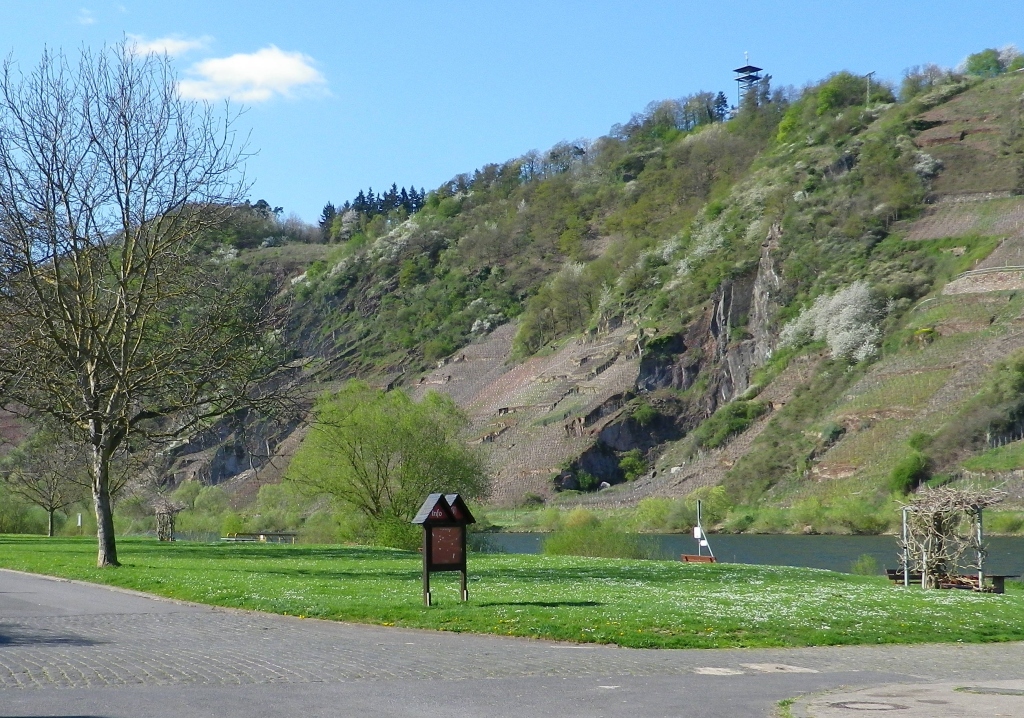
This is definitely a family trail. Like the Rhine Bike Trail (see the post), it is extremely easy pedaling, and passes through beautiful river landscape. It is quieter though, and seemed less crowded in villages than in villages along the Middle Rhine. The sights and sites were just a key lower: not as many museums or sites to visit, and not as hyped overall. Just a lot of natural beauty to marvel at, and still tranquil villages to admire.
Focusing on the middle section of the river in Germany, my ride began in Bernkastel. One of the largest towns along this middle section of the Moselle, it is also one of the most popular with visitors. And no wonder: Colorful half-timbered houses bedecked with overflowing window boxes line the narrow streets; neat-as-a-pin alleyways invite visitors to explore enchanting corners and discover squares tucked away from the main hubs of the town; a romantic castle ruin (which began life as a Roman fort) perches high above the river and town. Those who get there will enjoy a spectacular view of the river and vineyards, and a selection of food and wine – assuming you have already exhausted the many gastronomic and wine offerings in town. In many regards, Bernkastel is a great place to begin a bike ride.
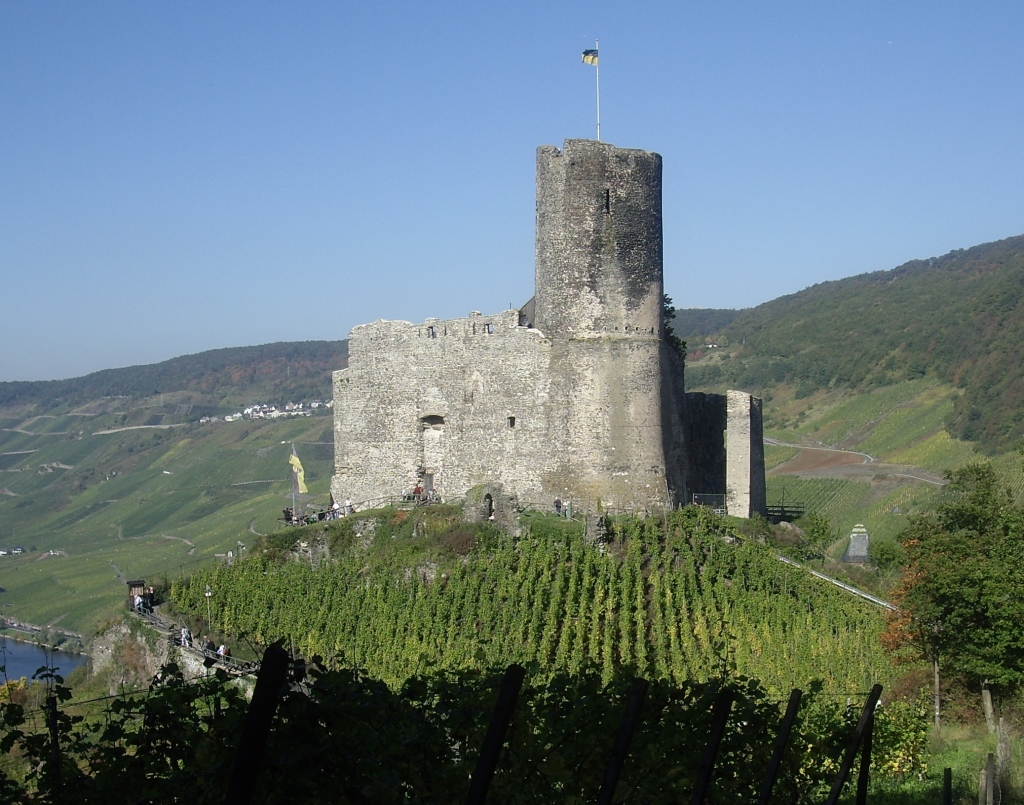
But maybe it is NOT the best place to begin a ride. Locating a parking spot-just for 15 minutes to unload my bike, gather my stuff, and get my bearings after a long drive-was a challenge; even with the town’s large parking lot. Fortunately, within a minute or two downstream, the comparatively deserted village of Graach appears.
Except for Bernkastel’s Doctor Vineyard, Graach marked my introduction to the famous vineyards of the Middle Moselle. This part of the river has many vineyards that are well-known for producing quality wines, and Graach’s Himmelreich (Heaven, in German) was just one of them. One of the area’s oldest wineries sits below the vineyard, the Sankt Josephshof. Across the river is the village of Wehlen, equally well-known in the wine world. But its famous Wehlener Sonnenuhr (Sundial) vineyard is on the right bank, just above the trail.
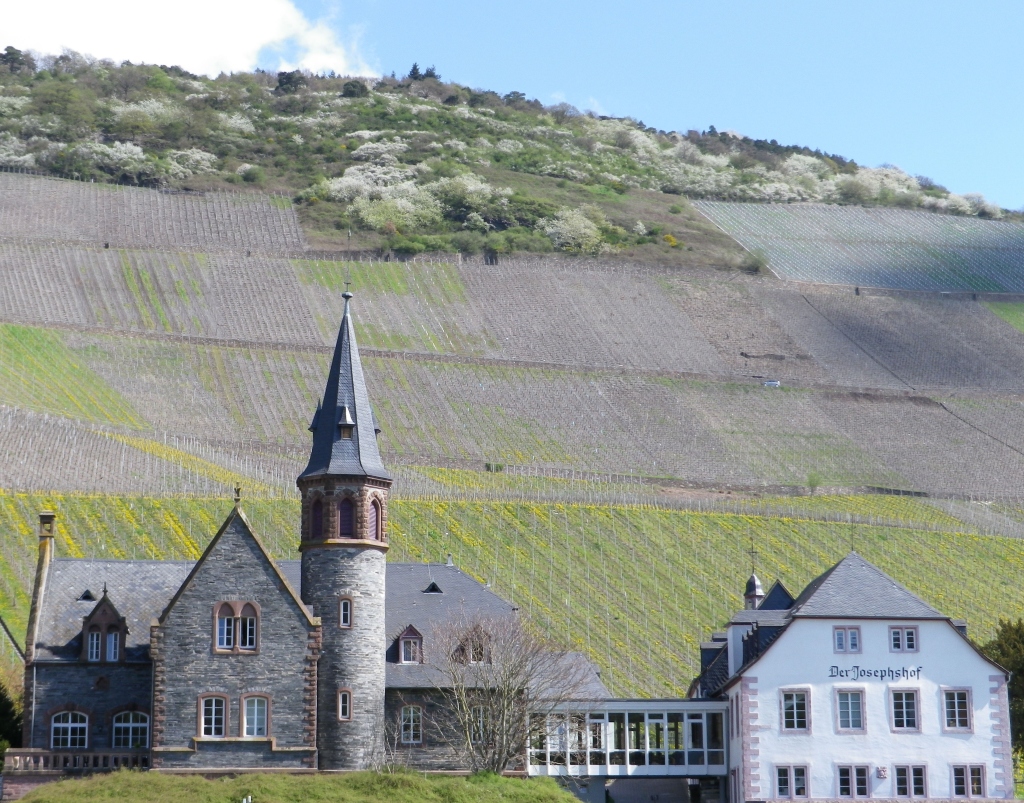
As the trail meandered along the river, more little villages with big-named vineyards appeared: Zeltingen, and its Himmelreich and Sonnenuhr vineyards, Erden’s Treppchen and Praelat, and Kinheim’s Rosenberg. But for Riesling enthusiasts, the most impressive sight would come at Urzig. The world-renowned Wuerzgarten vineyard, and its name, were clearly visible from across the river. This vineyard produces some of the most highly sought-after Rieslings in the world.
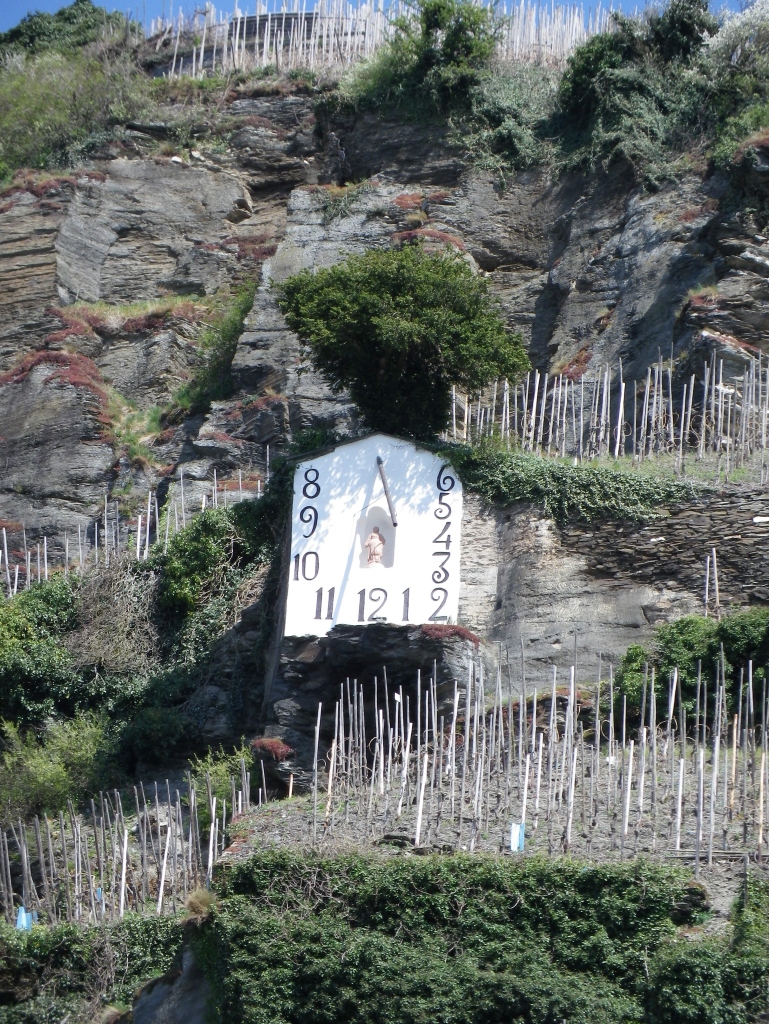
At the delightful riverside village of Wolf, the river makes a modest oxbow, followed by a more dramatic one, with its center point at Traben-Trarbach. To see it now makes it difficult to credit this small town with its former designation as the second largest wine-exporting town in Europe. But it was – second only to the port of Bordeaux. During its heyday in the late 1800s/early 1900s, several fine Jugendstil (Art Nouveau) buildings were added to its already impressive collection of medieval and renaissance era ones. New caves dug beneath the town provided storage space for bottles of Riesling from the nearby towns and villages.
Many cyclists on the Mosel Bike Trail cross the river at Traben-Trarbach to follow the trail along the left bank for a while. I continued on the right bank in order to visit Enkirch’s collection of half-timbered houses in the upper village. After my quick visit, a ferry from Enkirch would have put me back on the trail on the other side in a matter of minutes, but I stayed on the right bank.
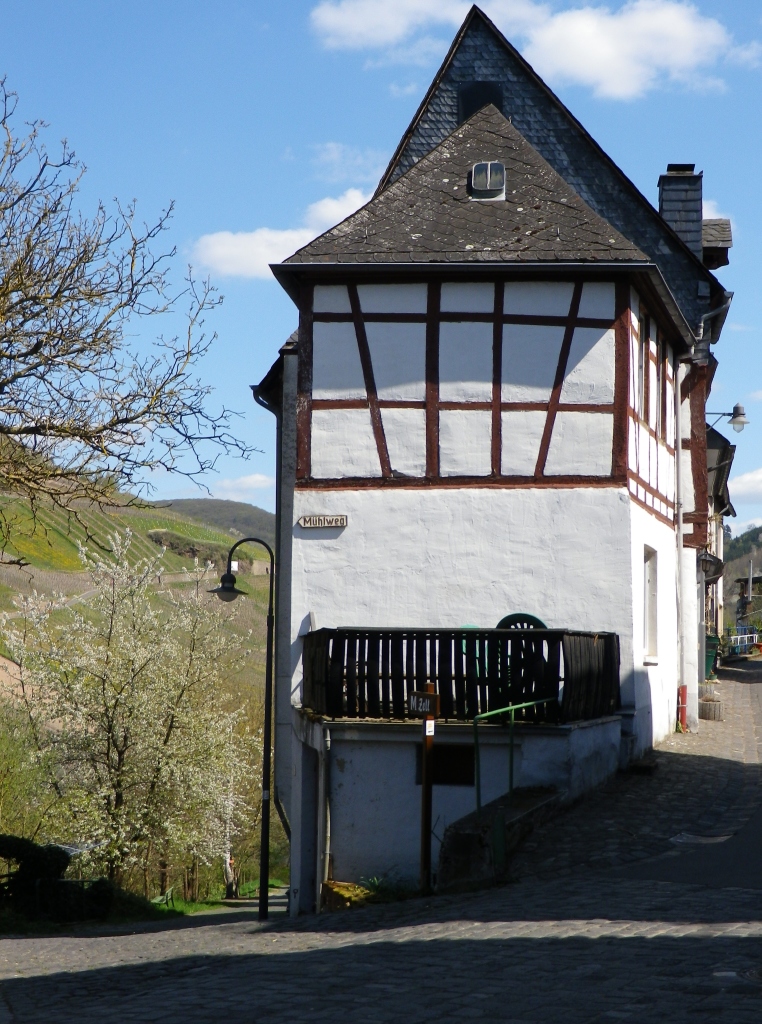
Passing a large stretch of vineyards, I made it to Puenderich, another quiet village with a delightful park along the riverbank. The massive medieval abbey of Marienburg, also the name of the famous vineyard beneath it, looked down on the small village from the opposite bank.
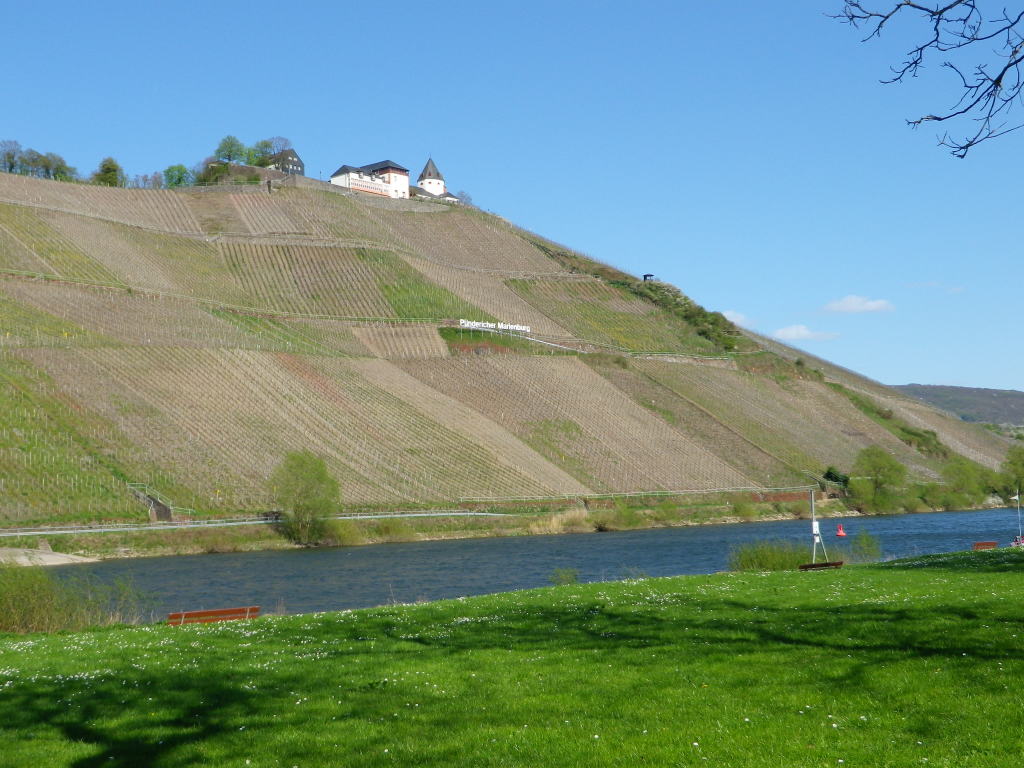
Some of the most flavorful, full-bodied Rieslings I had on the trail on this trip came from vineyards here and around the charming village of Reil, a couple of kilometers upstream on the opposite bank. In the Reil-Burg section of the river – still fairly broad, and lined by relatively low and gentle slopes – evening shadows here begin a bit later than elsewhere. As the bright mid-afternoon sun turned to the glowing, golden light of late afternoon sun, it was a perfect time to stop for the evening. Riesling in hand, I looked over the river to the famous vineyards that made this ride for Riesling possible.
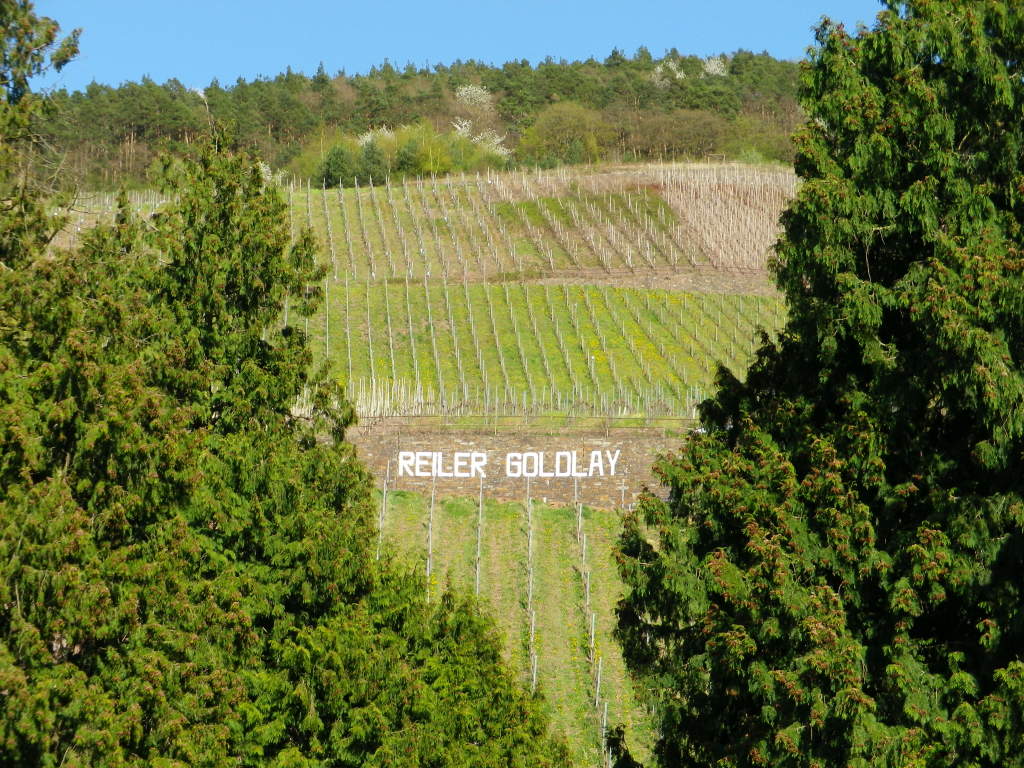
Click here to continue to Riding for Riesling, Part II.
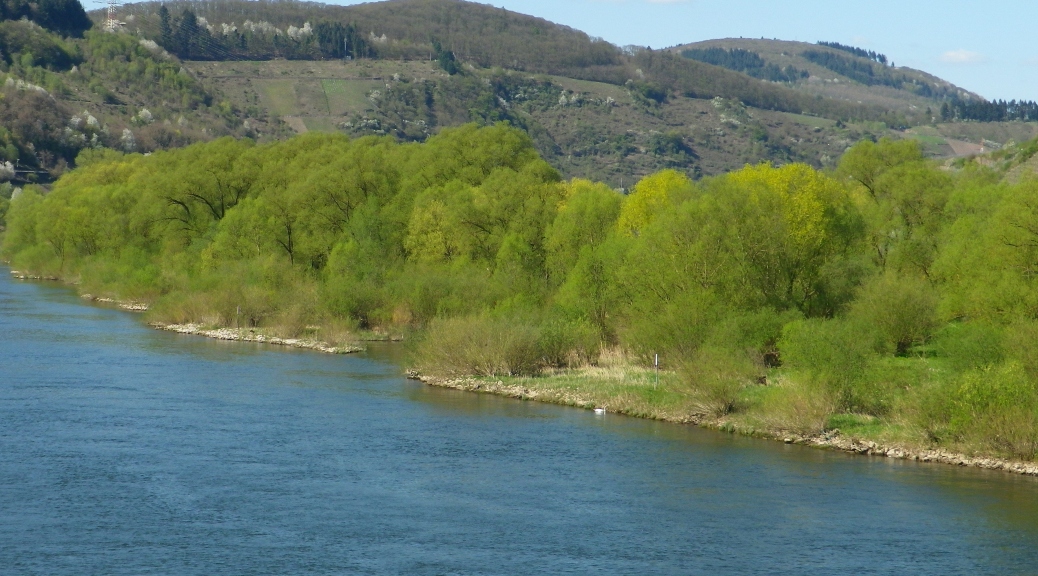
One thought on “Riding for Riesling, Part I”
Comments are closed.